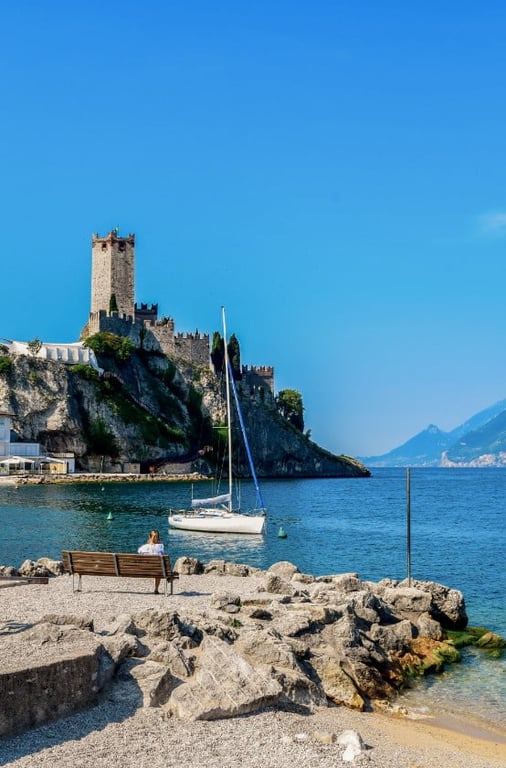
Geography and Climate
Do you know the territory of Lake Garda?
Garda environment
and nature
The lake’s present-day name, “GARDA”, dates back to the Middle Ages and derives from the gothic “Warda”, meaning “guard”, a reference to the rock that towers above the gulf of the same name.The area around Garda has prospered since time immemorial thanks to its mild climate and the bright, attractive landscapes of the northern part of the lake, the morainic hills to the south, the stretches of olive groves and vineyards, the colourful flowers – especially the bouganvilles – and the history of the industrious local people.
Olive trees and vines were grown on the hills, while citrus fruits were grown in the upper part of the lake, especially on the Brescia side, sheep were raised in the hinterland and timber was obtained from the woods. Fishing was the country's trade.



Lake Garda
Climate
The lake has a reserve of heat, characterised by a climate that can be defined as sub-Mediterranean. The average temperature over the year is 12°C, peaking at 25-27° C during July and August.
The mass of water in the lake, where variations in temperature are minimal, contributes to the mildness of the climate in the Benaco area, one of the main factors that make it so popular with visitors from the north of Europe.
Another factor that helps to make the weather in the area so mild, with pleasant breezes in the summer, is the exposure to sunlight on the eastern Verona side, two hours longer than on the western shore.
Seasonality
Spring and autumn are the rainiest seasons, while the summer climate is Mediterranean: dry with intense stormy spells, especially in August.In winter temperatures are milder than in the surrounding areas, with fairly small amounts of rain and snow, while the lower part of the lake is rarely subject to fog.
The lake is the central element in the Benaco landscape, with the mountains making an important contribution to the scenery and the nature of the area. Precisely because of the mild climate, the lakeshore and hilly areas boast especially luxuriant vegetation, while a wealth of different species can be admired in the more mountainous areas.











